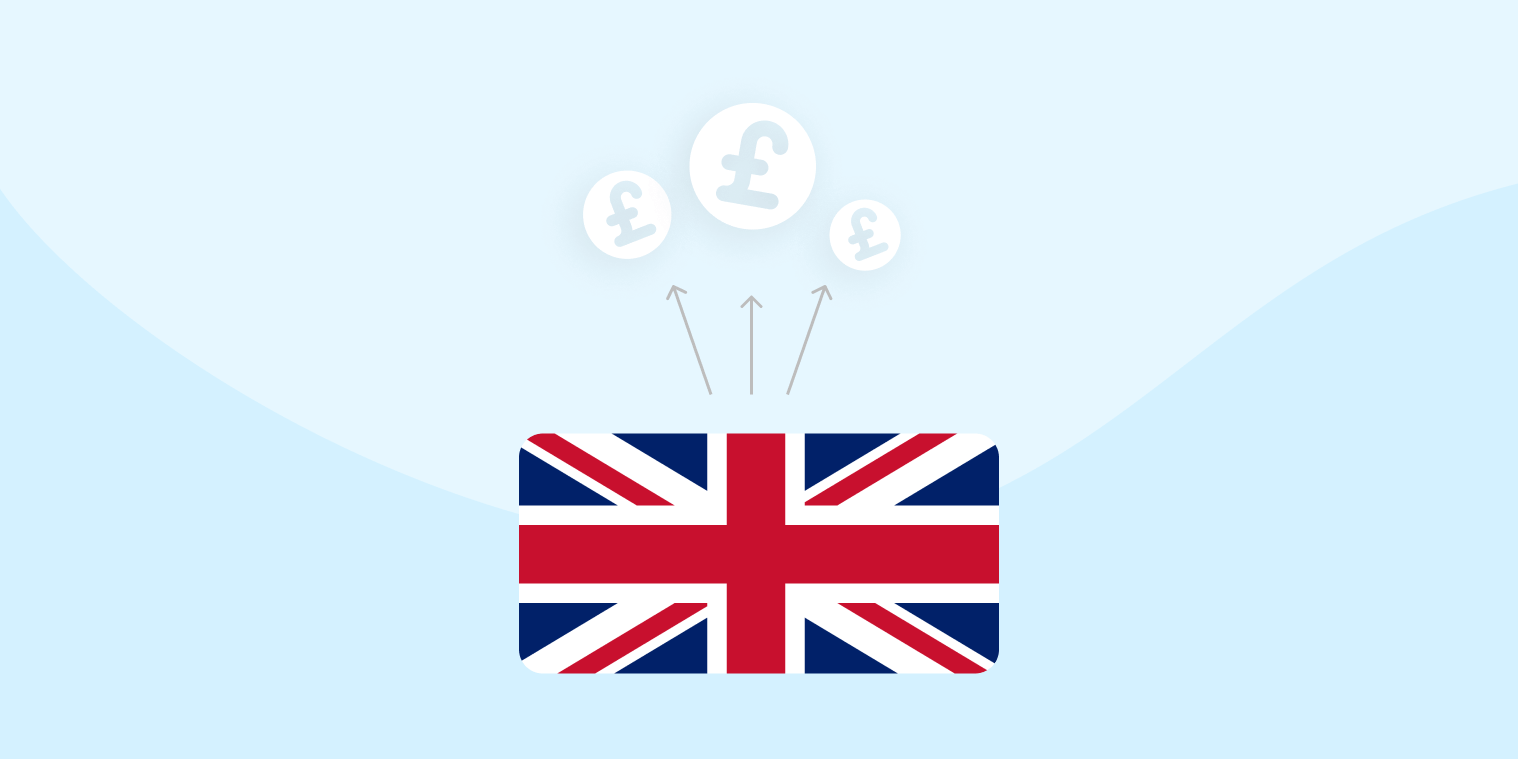Affiliate Marketing UK: Examples of How Publishers and Brands Smash It
The UK is well-known as a rainy place. Find out how to make it rain with affiliate marketing in the UK!
Affiliate marketers have three main English-speaking markets to choose from: the US, Australia, and the UK. Of course, America’s sheer size and consumer culture makes that audience a common target.
But UK affiliate marketing deserves serious consideration, too. Since 1996, when the UK was introduced through the Amazon Affiliate Program, affiliate marketing there has been growing consistently.
Bethany Worthington, co-founder of sustainable fashion review site Ecothes, sees the UK affiliate market as seriously under-utilized:
Affiliate marketing is now worth more than $12 billion, with affiliate marketing now accounting for 15% of digital marketing revenue.
So if UK brands aren’t using affiliate marketing as a channel, they’re seriously losing out on sales.
On top of that, the UK digital ad market grew by 41% to £23.5 billion in 2021.
Sounds like a great opportunity for US affiliates to expand to the UK, or budding UK entrepreneurs to join a UK affiliate marketing program.
Despite the comparatively smaller market, affiliate marketers in the UK take home about £43,295, or USD $53,319. Marie Claire, a UK-based company, recently won a business diversification award for pivoting (and saving) to affiliate marketing throughout the pandemic.
Plus, digital selling works well in the UK. Because guess who spends the most dough online? You’d think it’s the Americans; maybe in volume. Per capita, though, statistics tell us the British take first place. Hello, high average order values (AOV)!
So, how does today’s affiliate win the UK affiliate marketing game? We chatted with some experts, many of whom work with Affilimate, to give you the 411 on the best affiliate marketing UK strategies.
Best Strategies for Affiliate Marketing in UK
UK readers all want valuable content to help them solve their problems, but their purchasing patterns nevertheless differ. For example, Brits are more skeptical toward influencers (especially mega-influencers) than Americans are. Additionally, their product access may vary from that in the US.
You might use similar tactics for both US and UK audiences – but they won’t all work as effectively.
How do you ensure success if you’re still googling “affiliate marketing for beginners UK?”
Here are proven tips and tactics from our expert contributors and clients – as well as some slammin’ examples from the web.
1. Strategies for Content Websites
Boost traffic with UK SEO-driven content and track your affiliate links
Remember, you’re working with Google.co.uk, meaning if you’ve been active in the US or Australia, your SEO strategy will need some tailoring.
Alyson Long, founder of the travel blog World Travel Family advises:
Always mention the British versions of sites.
Long sometimes links to Skyscanner, a flight deal site popular across the world, for example – but she’s careful to use the “.co.uk” version for her UK-focused content.
Hubspot agrees, advising us to go further and build backlinks on other “.co.uk” sites, as long as they’re still relevant to your industry. This is crucial to build credibility for your site within search engines from Google to Bing.
Once you optimize your blog for British readers, it’s time to keep that content coming.
Tom Edwards, managing director of UK-based company The Sleep Advisors suggests:
Make content and start sending traffic.
Follow up with offers for wider footprints on site and social boosting. If you are clear on your USP and set yourself apart from the market, you can make some strong partnerships.
For The Sleep Advisors, all that mattress reviewing, content production, and SEO has paid off big time. Edwards’ site garners over 85% of their traffic from the search engine results pages (SERPs).
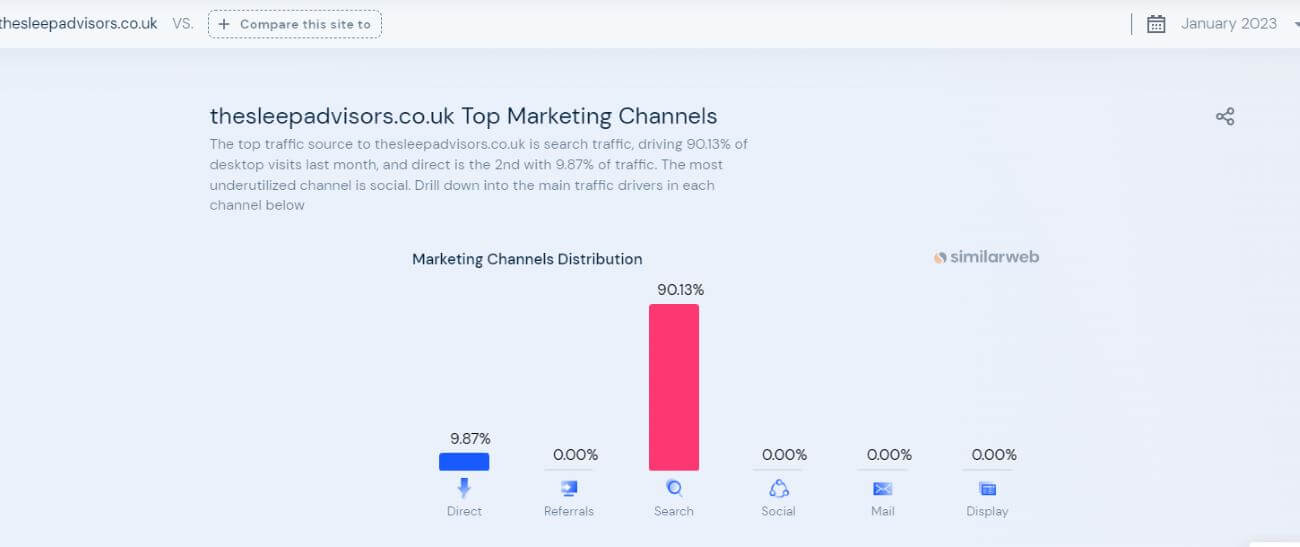
So, your traffic is flowing. People are clicking your affiliate links, and you’re seeing commission payouts come in. But how do you find strategies that will keep up the momentum?
For starters, you could periodically assess your content with Affilimate’s content analytics functionality. Start with our link management feature, which helps you keep track of all your affiliate links. Then, we’ll help you attribute revenue to specific links and webpages, track metrics, and identify your best-performing links, categories, and content. We also feature conversion heatmaps, which show you which links, creatives, and buttons convert your visitors.
Then, you can use Affilimate’s insights to devise a winning content strategy, so your site will be brimming with traffic and commissions.
Need affiliate marketing content ideas? Here are a few places to start:
Idea #1: Product roundups
About 90% of UK customers read product reviews before checking out online. Just make sure they’re skimmable and recent – UK buyers prefer reviews posted within the last month that include star ratings. Here’s a great example from The Sleep Advisors:
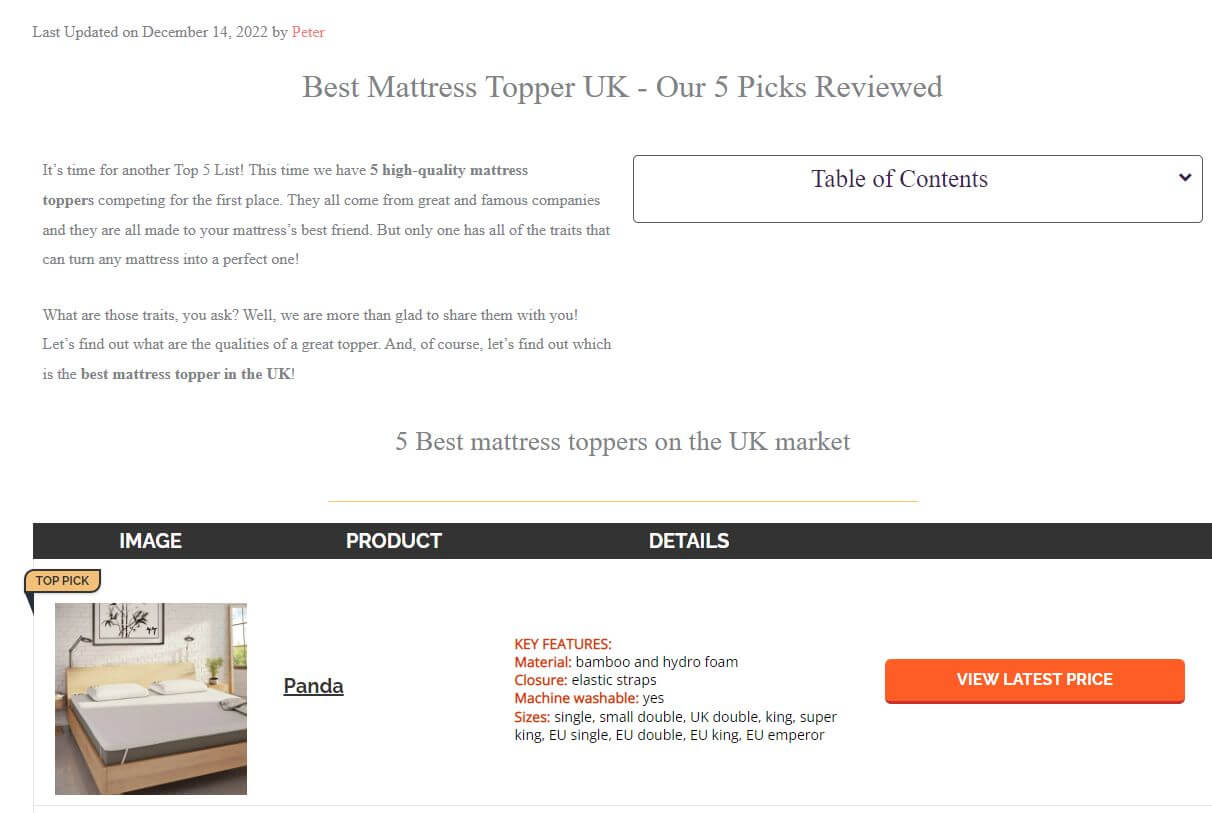
How recent are we talking? Within the last month, week, day, or hour – as recent as you can get! Recent updates are also ideal if your original post is a year old or older. Additionally, the reviews should be skimmable and conveniently highlight the most important features for your customers.
Idea #2: Social media posts
Social media posts continue to sway purchase decisions for UK buyers. One 2021 report shows 23% of UK residents using social media to discover new products.
ChicPursuit is a lifestyle blog, but founder Maria Julia leverages traffic from both the luxury fashion and decor reviews on her site, as well as her micro-influencer Instagram account:
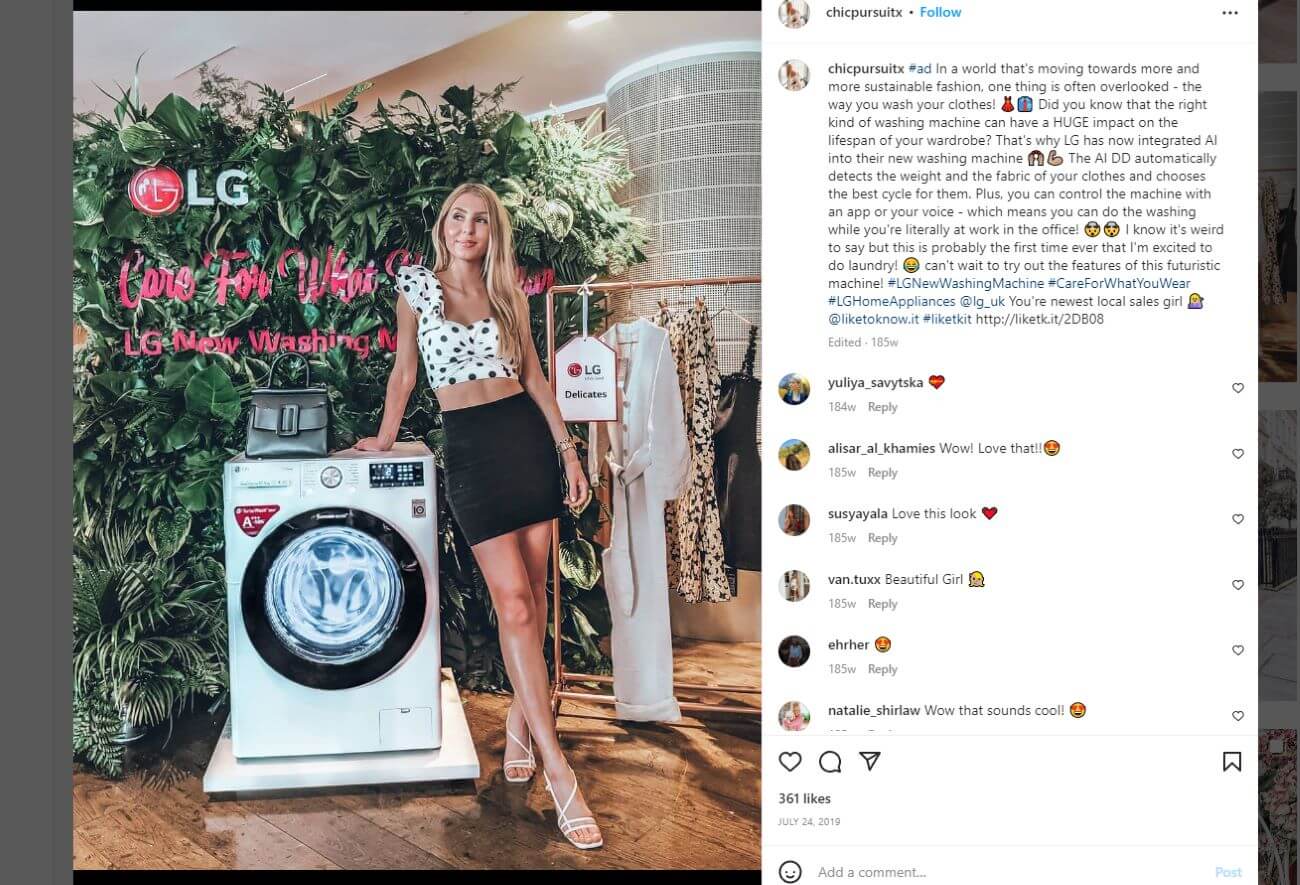
Idea #3: Product Comparisons
Did you know UK residents have a reputation for being “ditherers?” For the Americans out there, that means Brits can be indecisive. Imagine today’s British buyer struggling to pick between two products or brands…if they can’t ultimately decide, they might even abandon their purchase altogether.
A comprehensive comparison of the products and brands they were choosing from would be welcome, to say the least.
ChicPursuit features tons of brand comparisons. Just check out this one for luxury bag brands:
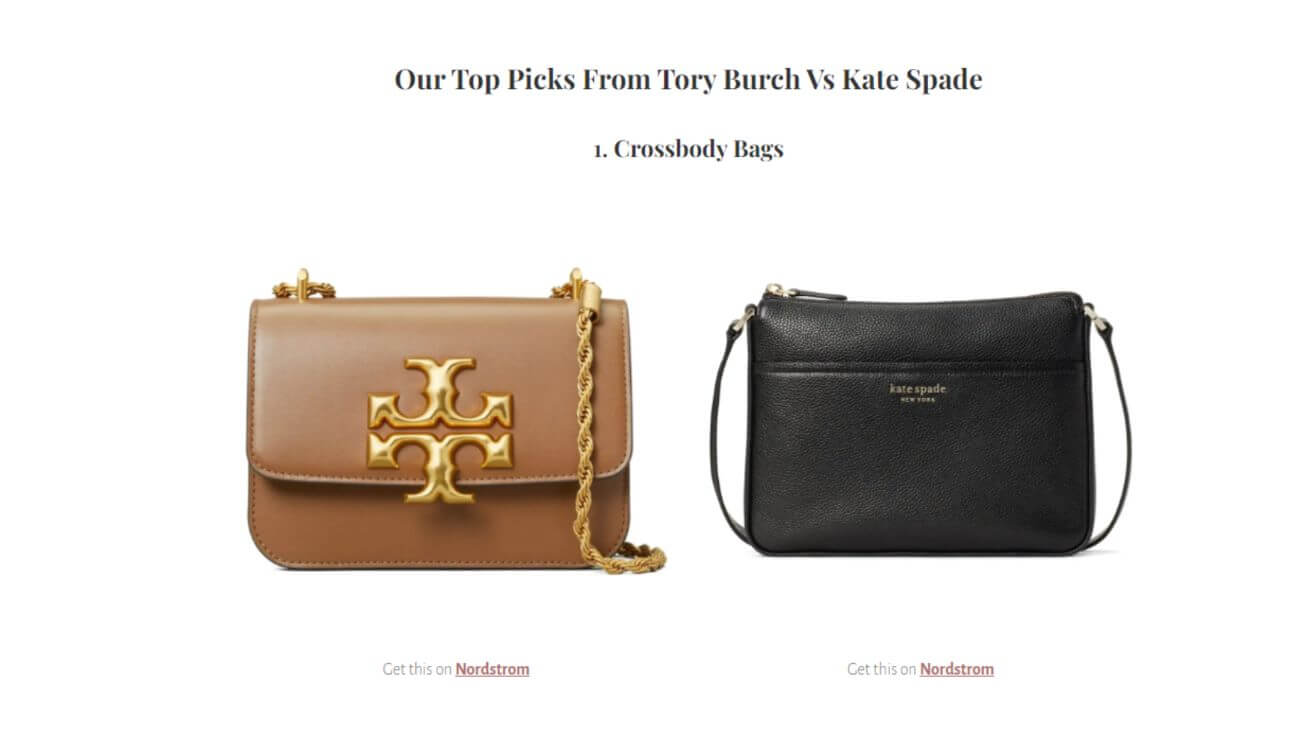
This article – “Tory Burch Vs Kate Spade: What Fashion Girls Need To Know” – cites differences between the two brands’ price points, accessibility, and products. Of course, the piece features affiliate links for readers to purchase a wide variety of products. Cha-ching!
Provide value while ensuring product availability for UK readers
UK-native Peter Reynolds, founder of commerce content biking blog Discerning Cyclist openly shares:
I wouldn't say I have any ‘UK-specific’ tactics.
As always, [I] just help people find products that will solve their needs. Sometimes that even means recommending a product that doesn't even have an affiliate program!
Reynolds serves his readers well with balanced cycling gear recommendations, like this roundup, which includes a budget option:
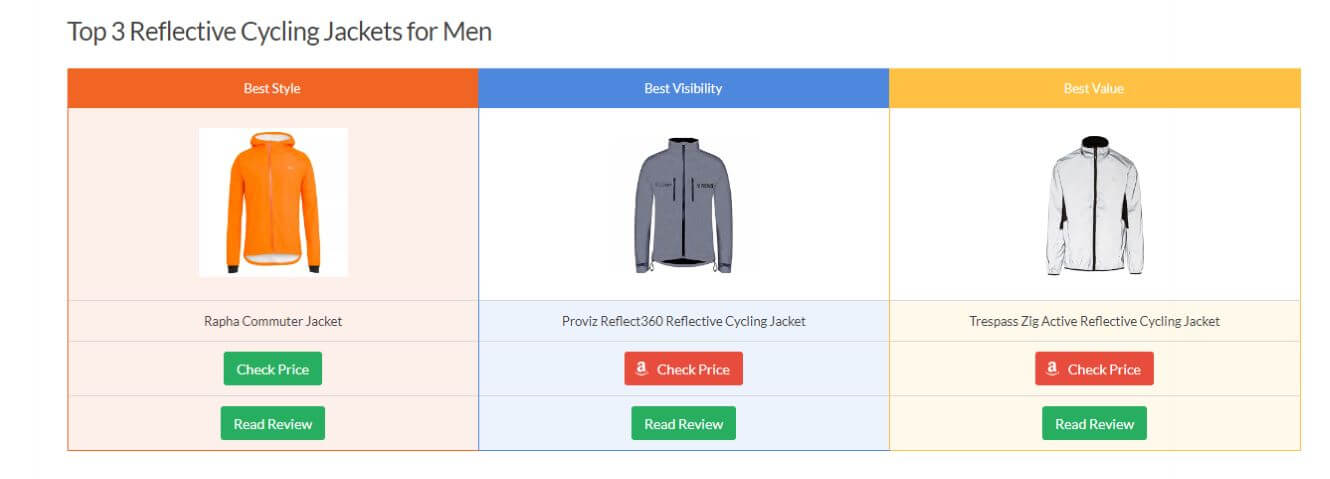
But keeping readers top-of-mind means more than just accounting for their financial situation. It’s important to consider the products that are readily available to them, too. Over 4,000 miles separate the UK from the US, which means if you’re only highlighting products available in the states, you’ll lead your UK readers to products they might not even be able to access.
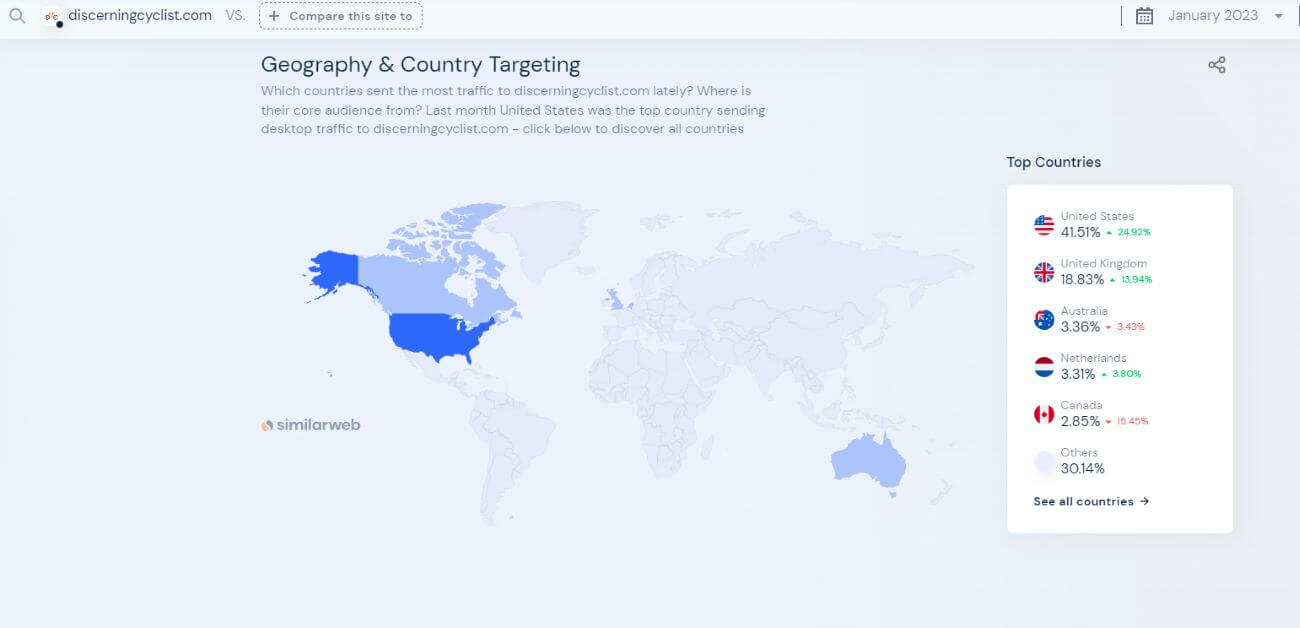
Apparently, this is also the most challenging part for Peter when creating product roundups:
The biggest challenge I face is that, as my audience is [divided] evenly between the UK and US, it's hard to find products that are available in both markets.
This can be especially tough for product roundups, as you need to inform the user which products they can actually get hold of and often the very best products won't be available globally
Still, Reynolds takes care to accommodate both audiences. Just check out this roundup of cycling clothing brands, complete with country flags to appeal to both men and women in the US and UK:
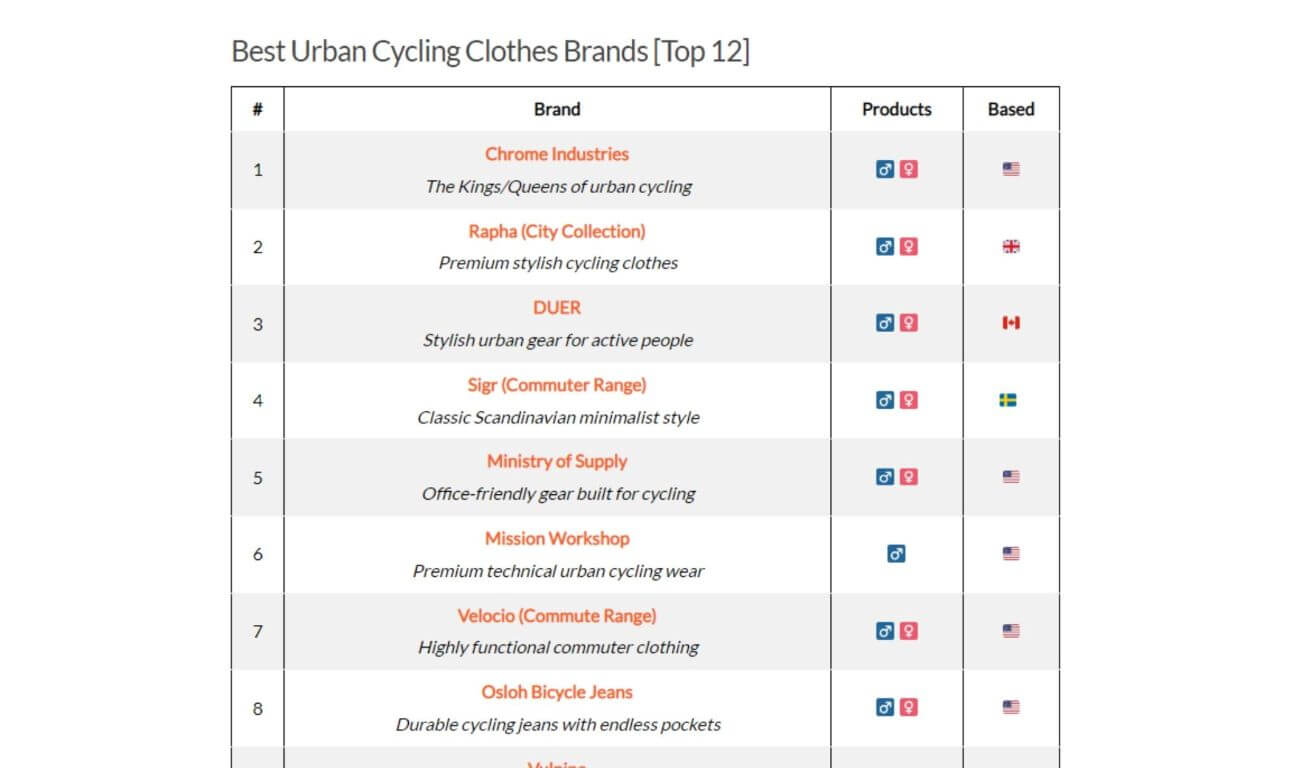
Read up on cultural norms, behaviors, and preferences
UK readers write and speak differently from Americans. A seemingly unrelated note for purchase behavior, right? Not quite.
Tom Edwards from The Sleep Advisors specifically says:
We Brits are a colloquial bunch.
We like our specific spellings (cosy, not cozy. favour, not favor). When we see content written for the wrong audience, it can be a real turn-off.
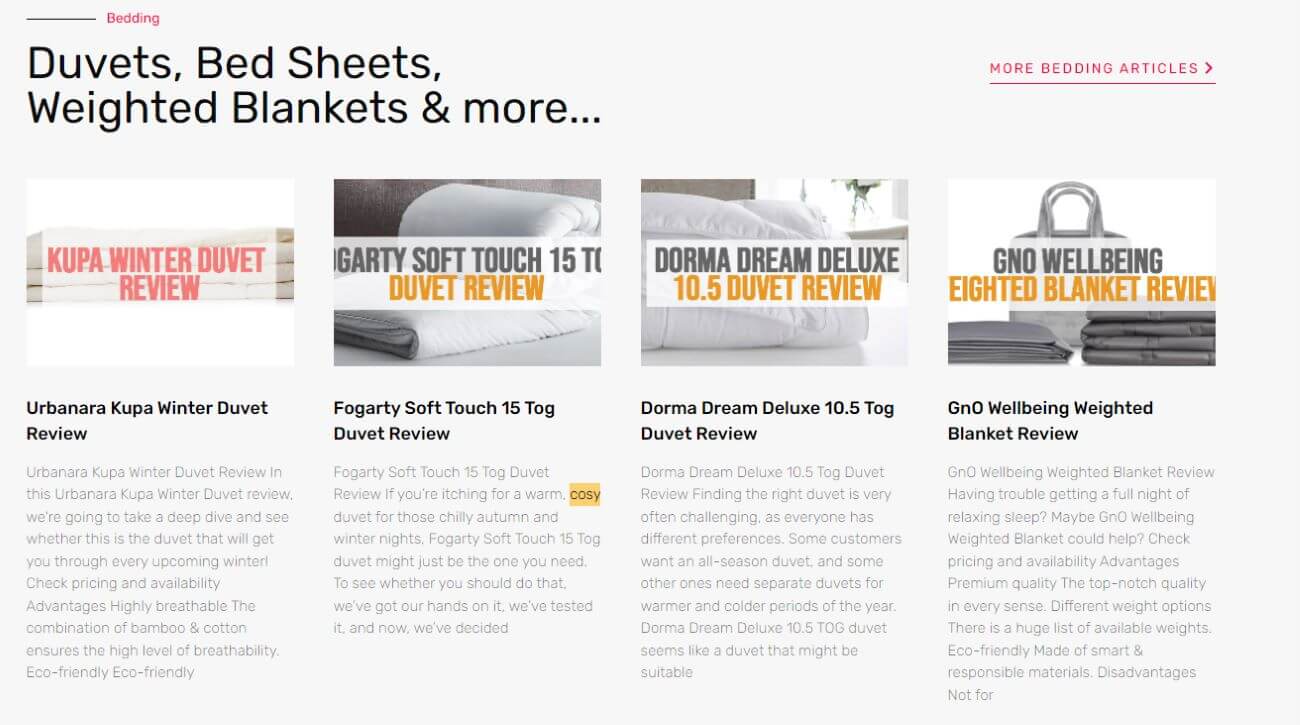
A spelling oversight might feel arbitrary, but it shows a lack of consideration for your audience. The Sleep Advisors ensure their spelling is British English – when they like a mattress, they call it “cosy,” not “cozy.” Need help making the switch? Play around with Grammarly’s British English lens to catch any errors before you make them.
But what if you cater to both American and British audiences? Would a Brit still be turned off by US English?
Edwards advises you to choose a dialect based on which of your intended audiences is larger.
Affiliates typically act as a referrer, reviewer, or recommender of brands. So the closer their intended audience feels to the affiliate company, the more trust from a ‘local’ recommendation plays a part.
In the case of The Sleep Advisors, we are acting as a UK-based reviewer of mattresses and other products relating to sleep.
Our team physically reviews the products in hand, while others are not. So emphasizing that we are a team of UK-based reviewers is a high trust factor in our content and the language we use is part of this.
That said, Edwards knows when and how to cast a wide net.
If an affiliate partner were offering some kind of digital content, which isn’t location-specific, then the US English would not deter a British reader as they are not so focused on a ‘local’ review.
We are used to reading and seeing American English, so if it fits the affiliate, then it would be fine.
Bethany Worthington from Ecothes agrees. She’s found success appealing to UK residents’ desire to shop local. One proven tactic she uses with her sustainable fashion review site is to connect with UK brands for featured posts, as seen in their “Sustainable UK brands highlight.”
This helps show off UK brands to people searching for homegrown brands. We also run Q&A sessions with sustainable founders, including UK brands.
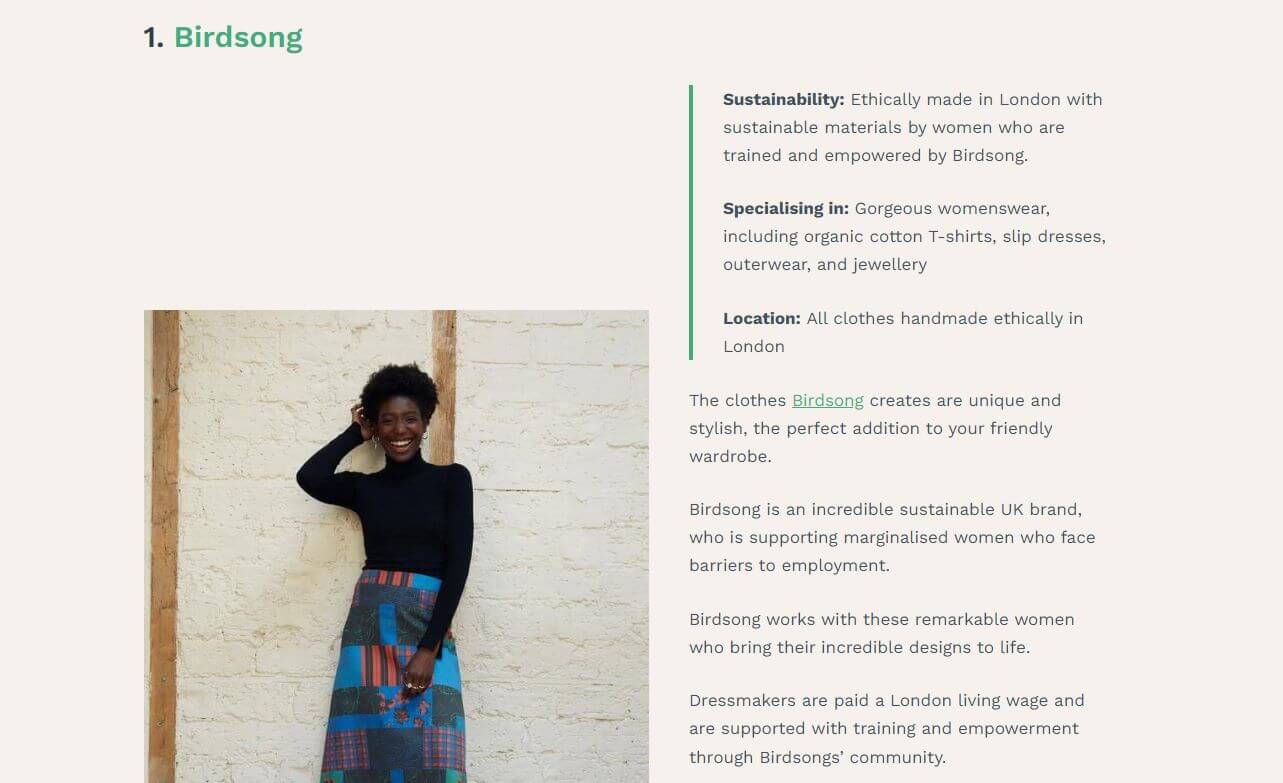
Bottom line? Write for your British readers with the same attention you would for any other target audience.
Of course, it does help to have some initial background.
Alyson Long was born and raised in the UK but lives in Australia. Long runs her family travel blog full-time. Her readers are primarily American and Australian, though she keeps her 10% British audience in mind with her native knowledge and content choices:
I think it’s valuable to think like a British person and know what British people like and where they go.
For instance, I know that a lot of Brits take winter sun holidays in February. I don’t know if that’s such a strong market in the US.
As a travel blog, Long is über-conscious of the differences in travel behavior across her audiences – determined by distance, access, and cost.
Americans get very little annual leave from work – like two weeks per year.
So Americans have to travel hard and fast – they book a lot of stuff in advance because their time is so limited. On the flip side, Brits can get 6-8 weeks. Plus, you have different visa requirements. So straight away, you have different ways of traveling.
Long demonstrates these careful considerations with dedicated blog articles to UK travelers as well, despite having a US-dominant audience.
Here's an example, you immediately know Alyson targets UK reader just from looking at the post title:
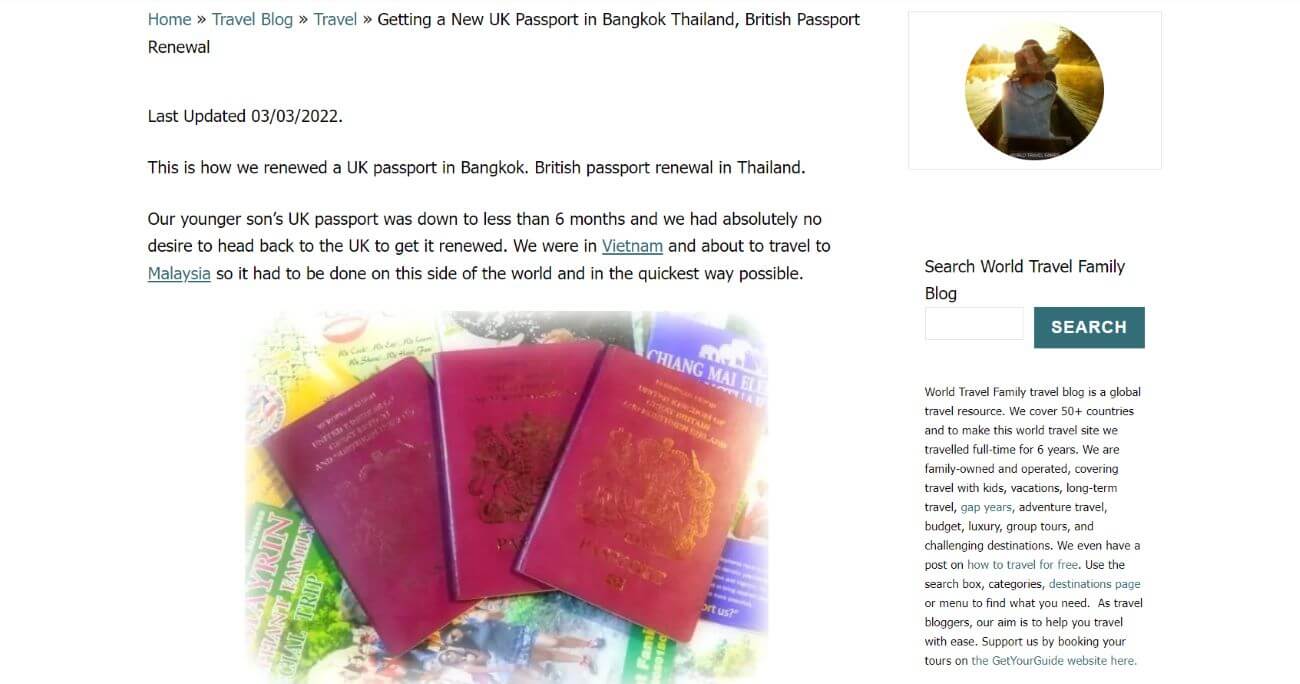
It’s about knowing British preferences.
British people don’t travel to the popular US destinations as much — so not so much Mexico, Central/South America, the Caribbean. But we can pop over to European countries for a weekend on a $30 flight, drive, or take the ferry.
If you’re not a UK native, there’s a lot you can learn about Brits’ behavior, such as:
- Reader feedback and surveys
- Personal research and market reports
- Travel
- Watching lifestyle videos
- Interviews
- Social media interaction
2. Become a Social Media Influencer
UK residents are less trusting of social media and influencers than Americans are. Does that mean influencer affiliate marketing in the UK can’t work? Not at all. You might just need to work harder to establish your reputation.
Here are some tips for smashing it as an influencer for UK audiences.
Leverage Industry Credibility, Experience, and Contacts
New to affiliate marketing in the UK? Why should the average UK scroller trust your opinion and recommendations on social media? Whatever you think the reason is, you should make it abundantly clear from the get-go. One way to jumpstart your influencer career is by leveraging your existing credibility.
Stylist and fashion influencer Erica Davies puts her experience front and center on her Linktree account: Former Fashion Editor.

According to her book, Davies was a “former fashion editor responsible for the fashion content of some of the UK's biggest-selling newspapers and magazines.” So, it’s no surprise that Davies’ reputation has given her some street cred with her 193k followers on Instagram. After having two children, she craved a different career and found it in affiliate marketing. She’s leveraged her impressive work history to partner with brands like John Lewis both as an affiliate and with a joint collection:
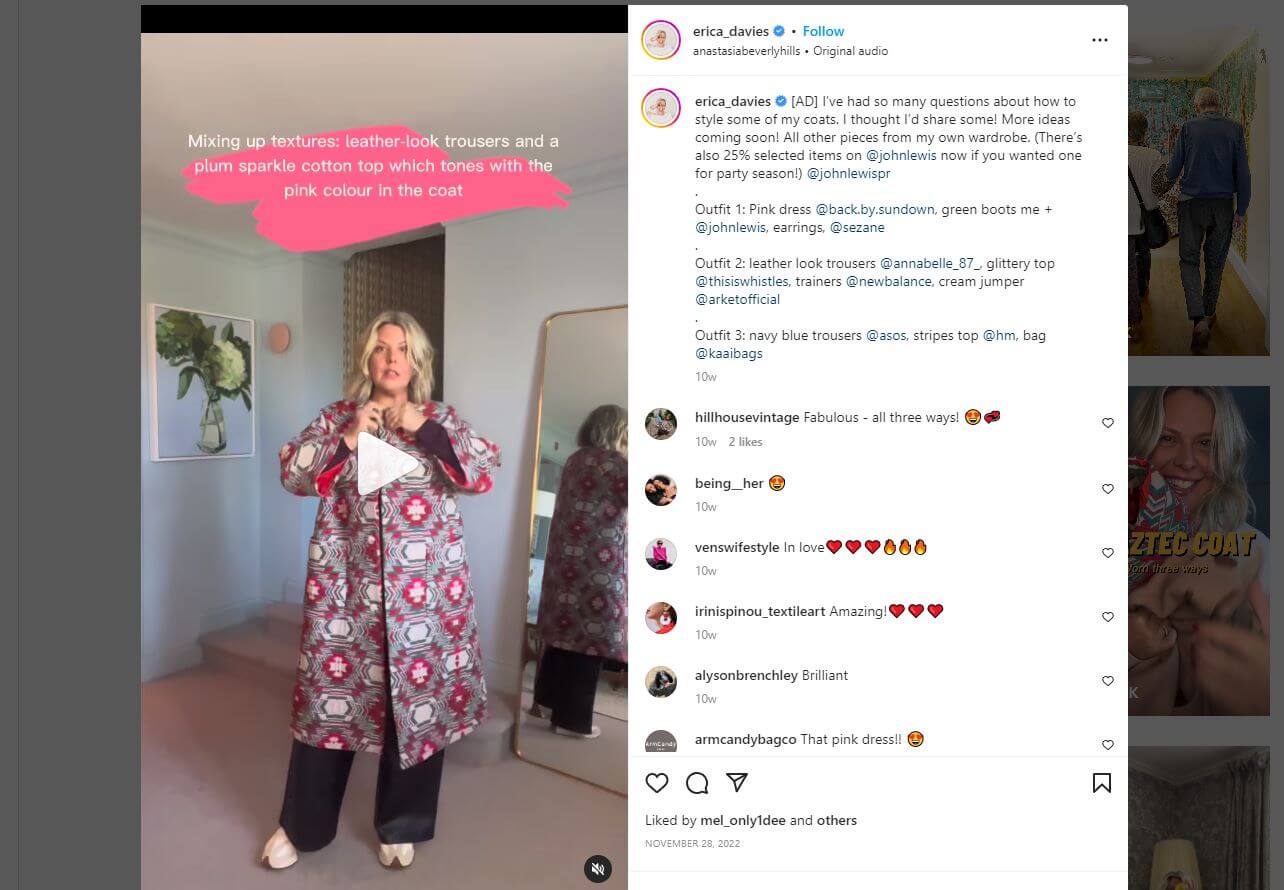
Lynsey Crombie is another great example of someone who knows how to leverage their credibility. Popular on Instagram and TikTok, the lifestyle and home cleaning influencer built her reputation and fanbase by appearing on popular shows like “Obsessive Compulsive Cleaners,” and “This Morning.”
She has a few partnerships and regularly posts sponsored ad content, including this TikTok Reel of the ScrubDaddy:
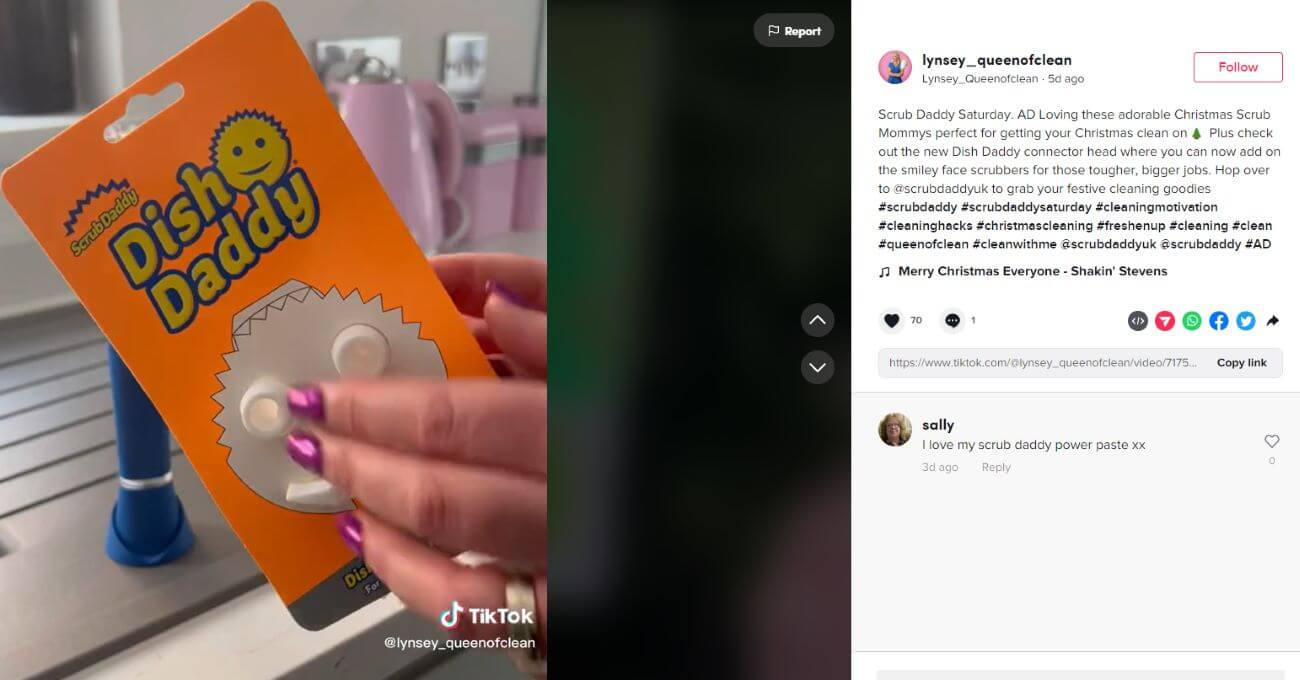
Create video content – especially on TikTok
Instagram is the most popular hub for influencers in the UK for its wide variety of content formats, including stories, posts, and the new favorite, video reels but TikTok is a close, growing competitor.
Cater to Gen Z at all? In that case, TikTok isn’t an option; it’s a must for affiliate marketing in the UK.
Still, in the UK, young and old generations alike watch over five hours of video content daily. Of course, that includes television – but you can bet YouTube and TikTok creep in there as well.
One beauty influencer, Jessica Pimentel, is quite active on both TikTok and YouTube, leveraging both audiences (over 87K TikTok followers and 100,000 YouTube subscribers). She boasts a nice 2.7 million views on TikTok and countless YouTub e impressions and engagement. Keep reading to learn how she maintains these revenue-generating figures.
3. Don’t Slack on SEO
Dealing with YouTube’s algorithm, is similar to dealing with text-based content on your website. To optimize your content so it ranks well on YouTube, you’ll have to pay attention to:
- Click-through rate
- Watch time
- User search history
- Previously watched videos
- User demographics
In other words? You need to take care of your SEO, stat. Beauty influencer Jessica Pimental demonstrates great examples on her channel.
Just look at all these engaging, keyword-driven, SEO titles!
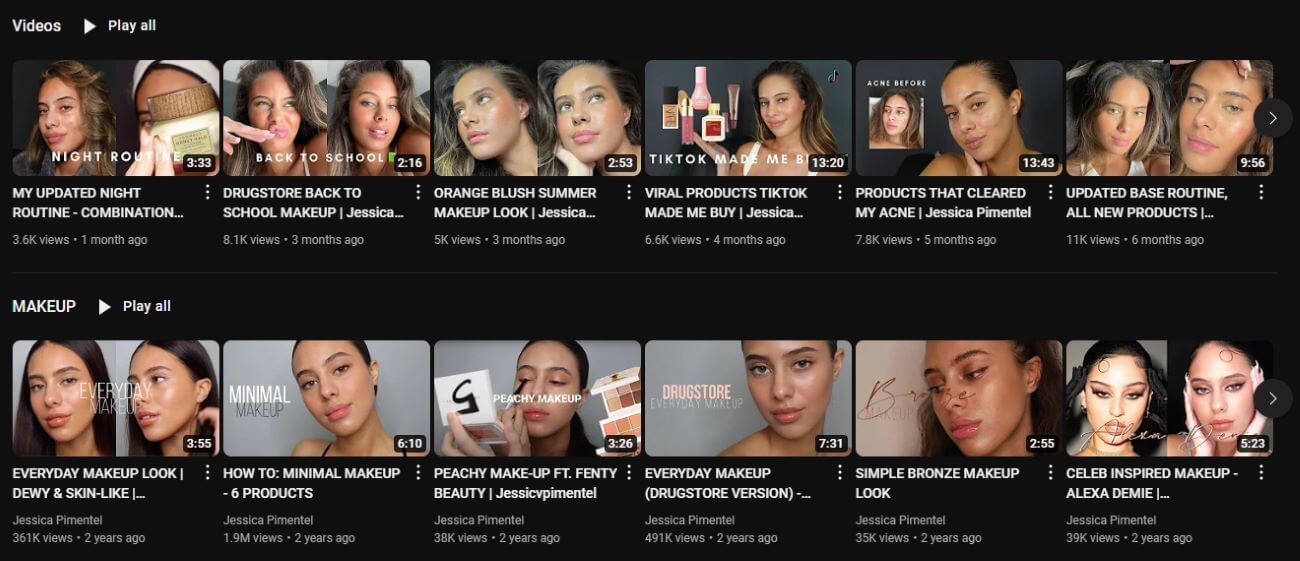
By merging two popular, SEO-friendly types of content – video and product reviews – she positions herself to instantly capitalize on viral trends, like the “natural look.” Here’s how:
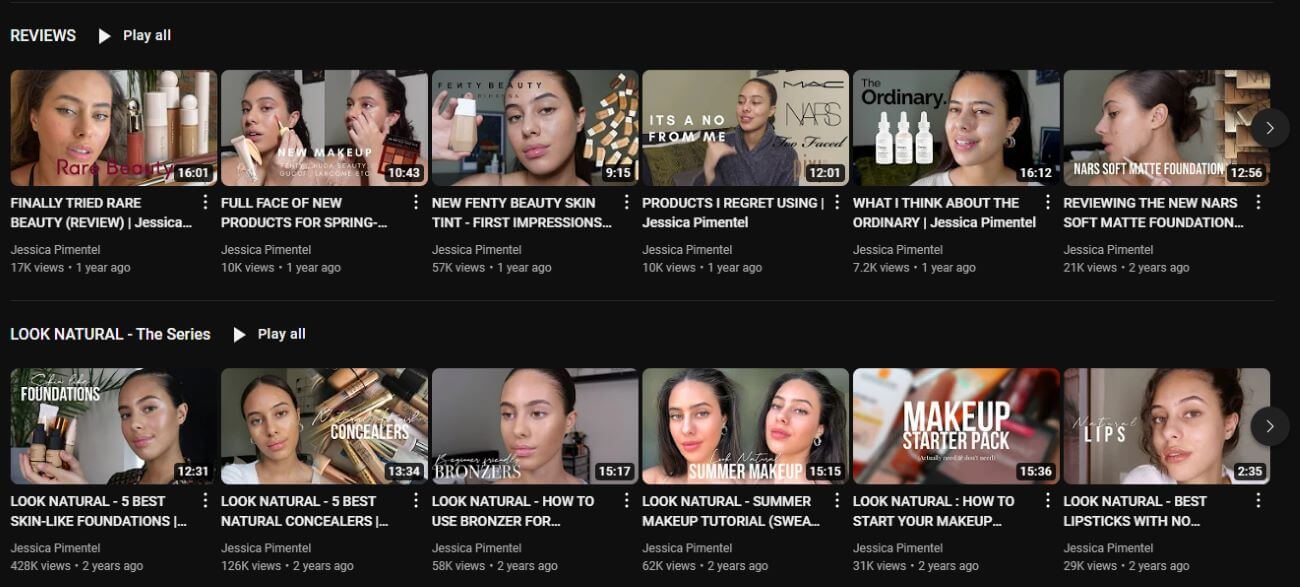
Apart from optimized titles and content, Pimintel checks off pretty much every YouTube affiliate box we could think of:
- Affiliate links in all video description.
- Disclosure
- Varied content types (e.g., “how-to’s”, unboxings, and roundups)
Notice all her video views? She has about 100,000 subscribers, but millions of views for some videos. If you want to see similar results, now is the time to learn more about making it as a YouTube affiliate!
4. Using Discount Codes
Sources say this past year’s holiday season was one of the most frugal for UK residents due to inflation.
Pair that with Britons’ tendency to make purchase decisions on price, and you’ve carved a perfect spot for discount codes.
You know the drill – a social media influencer promotes a brand and urges a purchase with their coupon code (e.g., “Use ABBY20, for 20% off”). But we see even more potential for dedicated coupon affiliate websites, like this one:
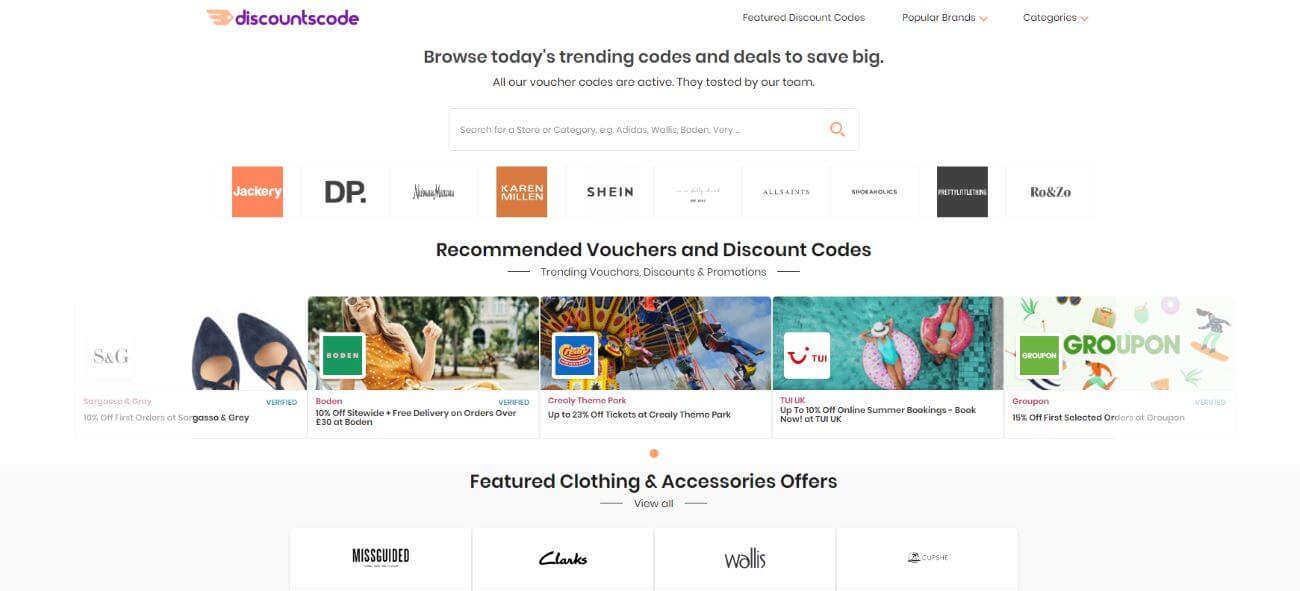
Need a new pair of loafers? Grab a 30% off Clarks coupon! DiscountsCode UK is a fabulous example of what British coupon sites should entail.
You see popular British brand partners like Clarks and Sargasso & Grey. But most major American and international brands either have a UK branch or ship to the UK. Plus, consumers find the discounts relatively substantial – more than the average 10%.
The beauty of the coupon site is that your audience is universal, even within the UK. That means there’s less need to tailor your messaging to a particular niche. You’re not targeting solely on brand loyalty or your own credibility – the pressure is lighter, as your audience simply wants one thing: a deal.
That’s a huge draw for the 37% of female UK shoppers and 17% of males who look for coupons before making a purchase. You’ll also increase AOV and commissions with a coupon, since the excitement and savings might urge a shopper to add more to their cart.
5. Create Your Own Affiliate Marketing Program
Let’s flip the script. Say you’re an affiliate for a few brands, but you have your own products on offer as well. If you’re looking for more leads, you could create your own affiliate marketing program.
This is especially ideal for businesses with digital products like ebooks and educational courses, since they’re easily shared and you don’t have to worry about shipping.
One UK blogger launched her own referral program, offering a 20% commission to anyone who referred participants to her courses. The best part? She found a way to monetize all the knowledge she learned as a marketer throughout her career.
Affiliate Marketing Companies in UK
UK affiliate marketing companies help publishers and brands connect with one another for partnerships.
You might use specific UK networks to narrow your search for UK brands specifically. Let’s look at a few UK networks, publishers, and programs you should consider.
UK Affiliate Marketing Networks
Awin
While founded in Berlin, Awin is most popular with UK brands and affiliates. This affiliate network saw over 230,000 new publishers in 2020.
Worthington (co-founder of Ecothes) likes Awin for its easy progress tracking, Google Chrome extension, user-friendly software, and filtering options. It also features a wide array of UK brands to pick from.
Webgains
Webgains is a European affiliate network operating in over 150 countries. If you’ve recently started a coupon website, this is a great network to join. Over 250,000 publishers like The Telegraph and TopCashBack use Webgains to earn commissions on discounted brand products.
Partnerize
Partnerize is an all-encompassing affiliate network, with everything you could think of to manage your program. Its recruitment, optimization, brand discovery, and payment capabilities are a great asset to UK publishers. Plus, it has a built-in fraud prevention feature to help everyone feel confident and collected.
Excited to get started? Integrate with Partnerize with Affilimate now!
TradeTracker
This UK-based affiliate network is brimming with UK brands and advertisers.
The company has won awards and nominations for its services, management, and technology. It’s a great place to find UK partners, though some may not find the platform to be as smooth or modern as others.
eBay Partner Network UK
With 22 million active UK users, eBay is worth considering as a partner. The giant online marketplace is popular with UK audiences for a wide range of products across all price points, most of which are new.
Optimise Media
UK-based Optimise Media features a healthy advertiser directory covering all corners of the globe, especially the UK. Publishers have a free range of industry, from business and finance to travel and beauty. You’ll even have access to company giants that come with brand loyalty, like Expedia, Paytm, and Tesco Bank.
Influencers with well-established social media accounts don’t have to worry about rushing a new website to sign up — your app, Twitter, YouTube, and other platforms are all acceptable. Plus, Optimise has a convenient integration with Affilimate!
UK Affiliate Marketing Publishers
Dreaming of joining the big leagues in UK affiliate marketing? Check out these massive publishers for inspiration:
Future plc
Headquartered in Bath, UK, Future plc has been around in the UK for over 35 years. The publisher giant reaches 1 out of 3 people in both the US and the UK. You’ll find prominent UK brands like Marie Claire, TechRadar, and Tom’s Guide in their portfolio.
TechRadar’s technology reviews are a great example of fabulous product roundups and individual reviews catered to UK audiences:

TI Media
TI Media is a digital publisher recently acquired by Future plc; however, they still retain their own branch. With parent company Time Inc. around since the '60s, this content giant sold hundreds of millions of magazines in the UK, especially in London, where their office is headquartered. Content spans digital and physical magazines and retail events.
Bauer Media Group
Bauer keeps things in the family with five years of generational ownership since 1875. Originating in Hamburg, Bauer owns hundreds of magazines published in the UK, Sweden, Germany, and other European countries. Women's Weekly and Modern Gardens are both owned by Bauer.
But Bauer's UK branch is particularly influential among the Brits as the UK's no. 1 magazine publisher. Still, Bauer's affiliate influence spans both written and spoken word with its radio branch, Bauer Media Audio, which reaches 20 million UK listeners. Recent developments include a podcast portfolio including The Empire Film Podcast and Superscoreboard.

DMG Media
With an annual revenue of over 650 million, you could say DMG media is the pinnacle of success in UK affiliate marketing. With the giant Daily Mail as a parent company, they reach over 250 million online viewers monthly.
A recent acquisition of New Scientist adds a whole new roster of curious viewers with plenty of affiliate ad revenue in the space, technology, wildlife, and other niches.

Hearst
Hearst is US-based, but has a prominent UK branch. The website has produced research and lifestyle review content for UK audiences since 1922, though the publisher has since branched out into international markets in China and the US. They garnered an impressive 28 million UK visitors in 2020 through their many household-popular publications like Men’s Health and Cosmopolitan.
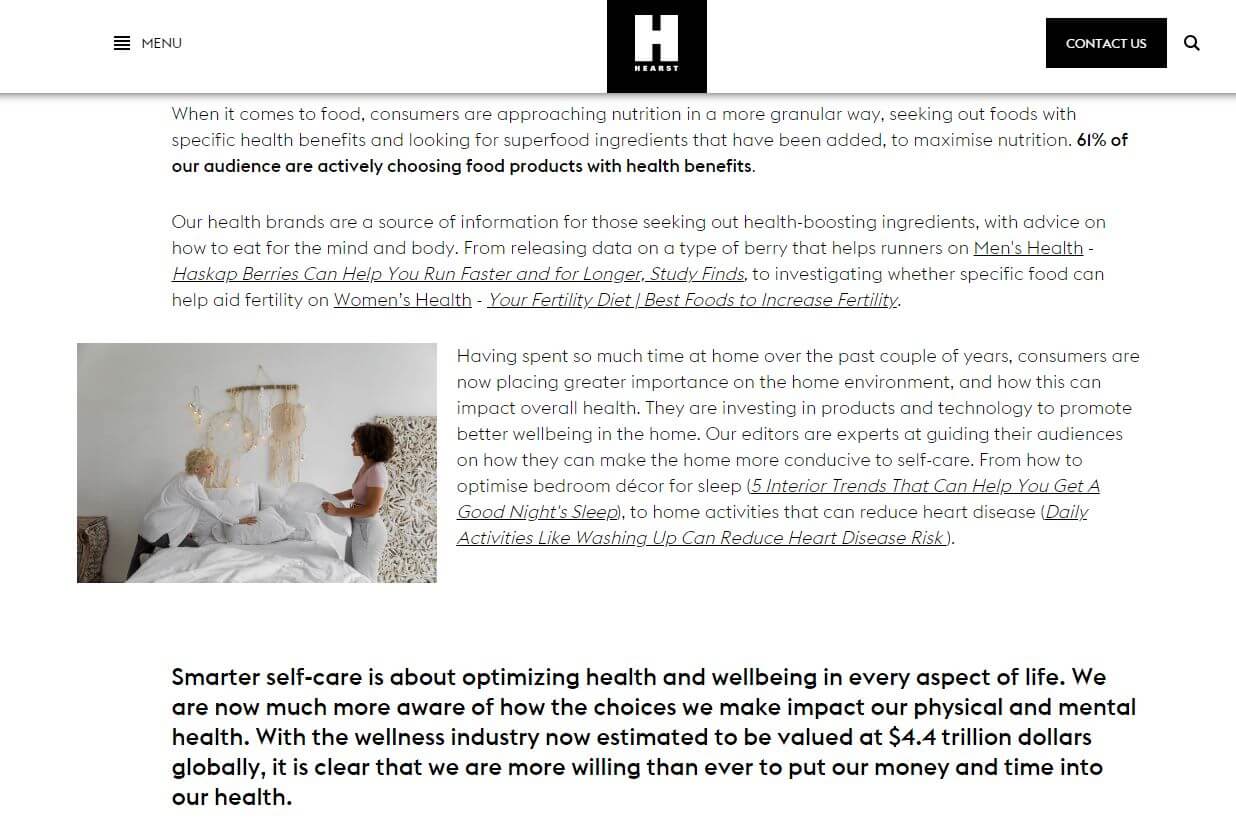
UK Affiliate Marketing Programs
Ready to get your feet wet with UK affiliate marketing? These programs might be worth checking out. Here are some unique features and benefits of joining each.
LeadPages
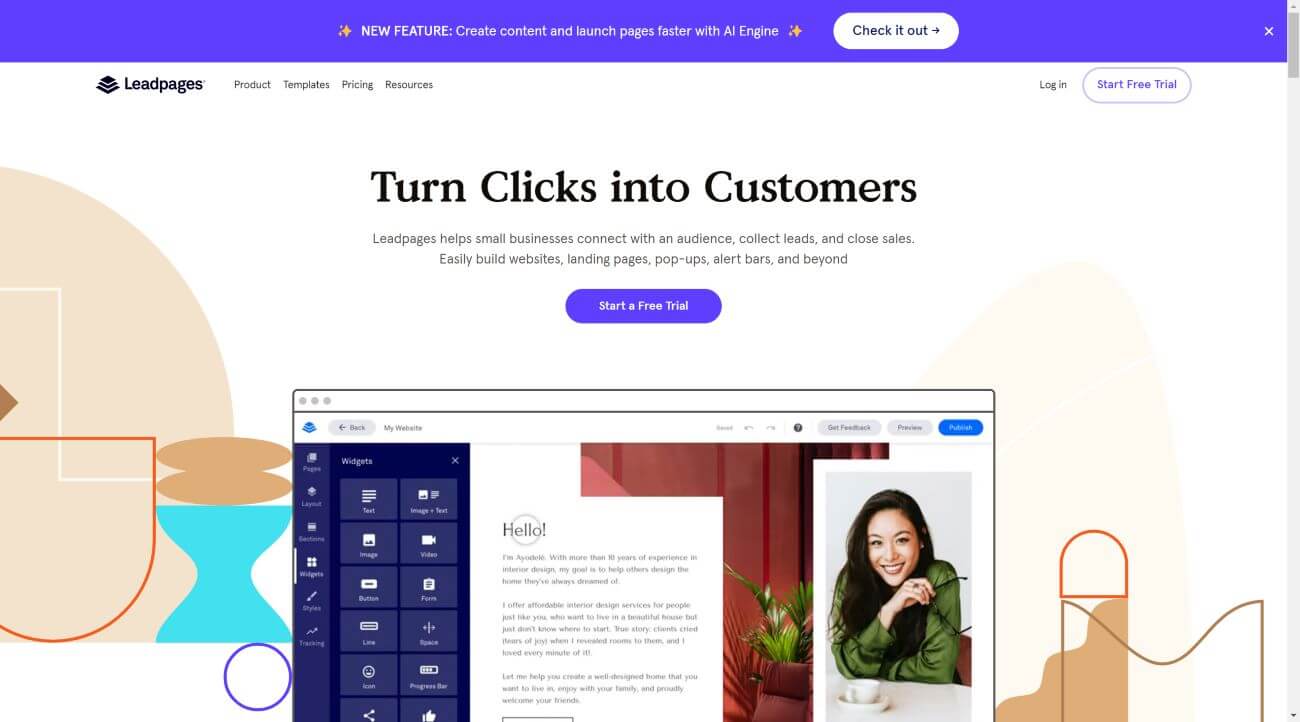
Did someone say 50% commission? Recurring, too? UK affiliate marketers will relish the earning potential of LeadPages’ affiliate program. What we love about software as a service (SaaS) companies like LeadPages is how universal they are.
That means, no matter your niche, audience, or industry, any entrepreneur or small business could benefit from marketing support and website creation from SaaS companies like LeadPages.
Etsy
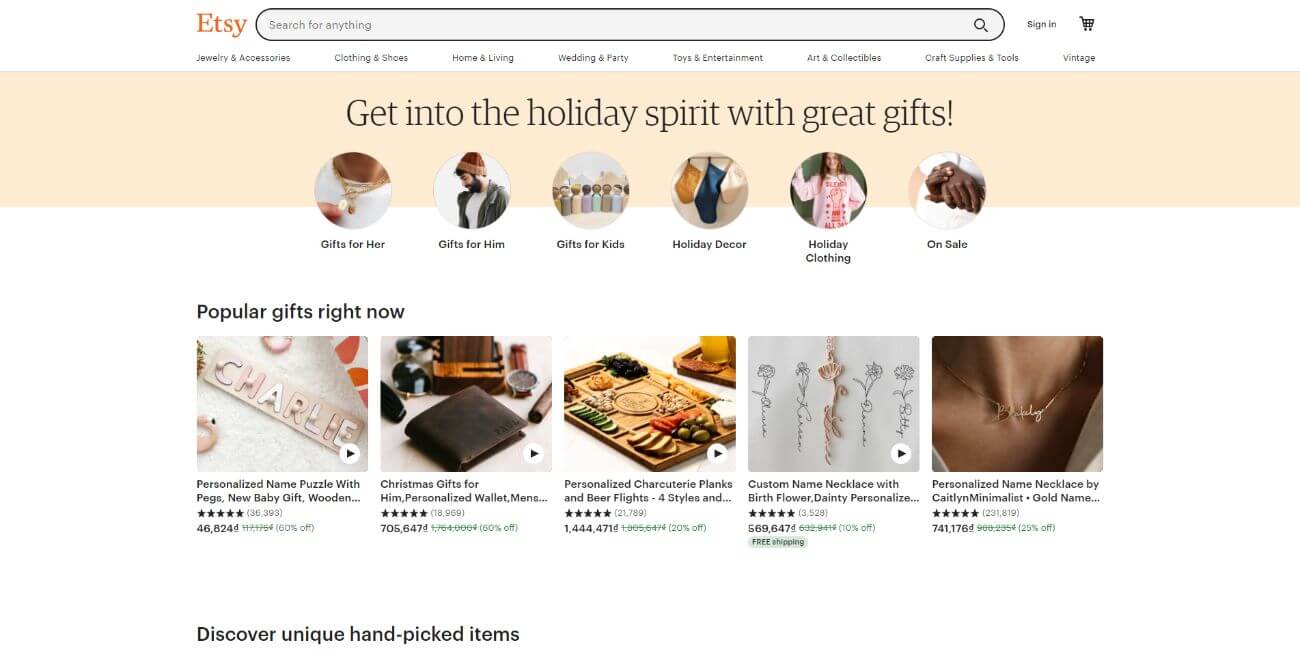
The UK has tons of artisans and creatives – and almost 1 million of them are on Etsy. Of course, the creative marketplace has more buyers and sellers in the US. But Etsy offers one of the best affiliate marketing programs UK affiliates can access.
Why? The authentic relationships you can build with your audience and partners are incredibly valuable.
If your audience likes shopping local – like we know audiences in the UK do – they’ll especially appreciate you promoting art from local artists. Your compassion for the local scene won’t just win you brownie points, it will also go a long way in gaining their trust.
Plus, you’re dealing with one small business owner, which makes it way easier to build partner relationships. After all, you have something in common. You’re both trying to make it as entrepreneurs in the UK! Even if you only lead them to a $20 sale, they’ll appreciate it that much more than the typical giant corporation.
Is UK affiliate marketing worth your effort?
Will affiliate marketing for UK audiences work if your focus is currently the US market? Can similar affiliate marketing strategies reach Brits, Northern Irish, Scots, Welsh, and Americans alike?
Absolutely. That is, if you recognize the similarities and differences in their purchasing behaviors.
In the UK, you have a 67-million-person, English-speaking population that shops online and buys more on average than the average American shopper.
Of course, you just have to take some time to get to know the limeys. Have fun with it – watch some YouTube videos, read about their customs, or even take a trip to Manchester the next time you have a chance.
